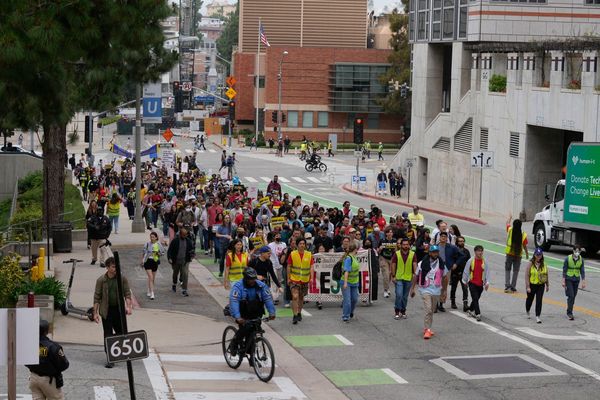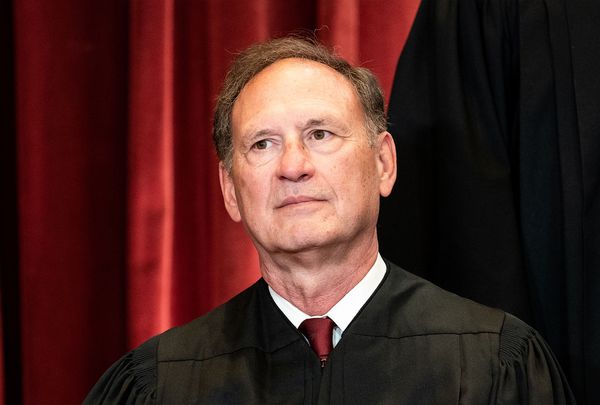
More than 14 years ago, a couple of months after the collapse of Lehman Brothers, Queen Elizabeth II was treated to a lecture at the London School of Economics on the origins and effects of the economic calamity then engulfing the world.
At the close of the speeches, she asked the gathered economists one unceremoniously obvious question: “Why,” given the enormity of the crisis, “did nobody notice it?”
The same grave question will undoubtedly be asked if (and when) the Reserve Bank of Australia’s hawkish approach to the inflation problem of today steers the economy into what increasingly feels like an inevitable downturn.
One response might be the central bank merely overcooked things, failing to account for the devilishly tricky lag carried by rapid and cumulative interest rate rises and their impact on sticky inflation. As governor Philip Lowe put it in Senate estimates last month, while “we don’t have a perfectly clear crystal ball” there is a risk “we have not yet done enough with interest rates”.
They’re comments which segue seamlessly into the contrary argument that stands to be made if the country is indeed tipped into a devastating recession. The view being that much of the blame for any hard landing can and should be sheeted home to the failure or refusal of conventional wisdom to recognise the folly of looking to the central bank to solve inflation.
“The idea that the central bank can manage inflation by skilfully raising or lowering interest rates has always been a myth — historically, there’s no evidence for it,” economist Steven Hail, himself an alumnus of the London School of Economics and associate professor in economics at Torrens University, told Crikey.
“When people imagine that the governor of the central bank has a huge amount of power to drive the economy, to manage inflation, it’s not unlike somebody looking at a child in the passenger seat of a car with a toy steering wheel and thinking the child is steering the car.
“In reality, the person who has the power to drive the economy is the treasurer — it’s Jim Chalmers.”
Hail is among a growing chorus of voices — including eminent economist Ross Garnaut, US Federal Reserve Bank chair Jerome Powell, the union movement and European Central Bank researchers — to cast serious doubt on the econometric modelling underpinning current monetary orthodoxy.
It’s modelling which holds the one and only way to get prices down is to squeeze borrowers by jamming up interest rates, which — so the argument goes — will then cool the economy by forcing some people out of work and the rest to clamp down on their spending. As job losses ensue and economic uncertainty rolls on, the spectre of unemployment will supposedly frighten workers away from demanding a wage rise to compensate for the higher prices and, eventually, inflation falls. A theory, in other words, that unashamedly requires some to lose their jobs and the rest to take real wage cuts. It’s both as brutal and as simple as that.
But as Powell conceded in June last year, the stickiness of today’s inflation and, not least, the failure of economists to see it coming, has defied that received wisdom. “I think we now understand better how little we understand about inflation,” he said at a European Central Bank Forum in Portugal.
Hail said there exist at least three, possibly four, reasons for this. The first, and most obvious, being the failure to recognise the conventional model — the idea inflation can simply be tamed by raising interest rates — wrongly assumes the drivers of inflation are necessarily demand-side factors.
As we know from the Reserve Bank’s own reckoning — much of which finds reflection in recent IMF research — up to three-quarters of the inflation experienced today is the product of supply shocks caused by the war in Ukraine, the pandemic and natural disasters, things which manifestly lie outside the control or influence of any central bank.
“There’s been a supply-side shock to the global economy related to the major war in Ukraine, climate change and, of course, the pandemic, and all of that has pushed up the price of food and energy,” Hail said. “And when energy prices climb, it has a ripple effect on the whole economy. We’re yet to see those things settle.”
The second but decidedly less obvious problem with the conventional model is that it pays no heed to substantive structural changes to the economy, much less the disempowerment of thousands of workers, wrought by the drumbeat of neoliberalism and the decades-long decline in union power.
“Unions in the ’70s were much more powerful, industrial relations legislation was different and we didn’t have so much insecure employment and part-time employment — most people [these days] don’t have the bargaining power of the past [to press for higher wages],” Hail said.
In other words, the fiction peddled in the recent thinking of the RBA — that the ordinary workers of today can compel employers to accede to wage demands, thus risking a wage-price spiral — has long been unmoored from reality. So much is borne out by years of non-existent real wage growth, which — contrary to Lowe’s most recent statement on the economy — has just suffered its greatest deterioration on record.
The third consideration swept from the purview of orthodox inflation analysis, Hail said, turns on the realities and vagaries of concentrated market power in Australia as elsewhere.
“We haven’t seen a wage-price spiral but what we have seen is an increase in the share of gross domestic product going to profits and a fall in real wages,” he said. “Firms with monopoly pricing power have taken advantage of the social licence they have to increase their prices and increase their margins above that what they otherwise would be able to do, prolonging the inflation episode.”
All of which is to say the Reserve Bank’s thinking takes a simplistic, top-down, macro approach to the problem of today’s inflation, and one that ignores what former chief economist of the IMF Olivier Blanchard has cautioned about the complexities of any inflation episode.
“A point which is often lost in discussions of inflation and central bank policy [is that] inflation is fundamentally the outcome of a distributional conflict between firms, workers and taxpayers,” he tweeted on New Year’s Eve. “It stops only when the various players are forced to accept the outcome.”
Rather than “engaging in knee-jerk reactions” by raising interest rates, Hail said the better way of managing inflationary pressures, even now, would be to use a combination of prudential policy, fiscal measures, sharper competition laws and patience.
“It’s certainly the case there are some things the government could have done which would have mitigated some of the inflation pressures in Australia,” he said. “The interest rate rises were a mistake. It would have been better to instead look to prudential regulation through APRA, fiscal policies like a super profits tax, a more aggressive monopoly policy and just wait.”
In Hail’s view, the inflation data of recent months had laid bare the tendency of the central bank to misunderstand the complex relationship between the cash rate and the wider economy. Contrary to the Reserve Bank’s recent denials, one of the most significant drivers of residual demand-driven inflation was soaring rents, which he said were “plainly” being driven by higher interest rates as landlords passed those costs on to renters.
Another example, he said, could be seen in some of the mark-ups by businesses, which likewise were also paying higher borrowing costs or rents.
“We’ve certainly gone through the four horses of the apocalypse as far as supply is concerned, but that doesn’t mean [those supply problems are] permanently persistent and nor does it mean the right way of dealing with the [residual] inflation driven by demand was to raise interest rates.”
It’s a perspective broadly echoed by Garnaut, who’s recently said the creation of an independent body which can influence both fiscal and monetary policy would be desirable: “What we now need is an independent authority looking at overall demand, and not just monetary policy,” he said, pointing out the current approach to inflation carried too great a risk of a recession.
“There is a danger that we will replace continuing improvement to full employment with rising unemployment — perhaps sustained unnecessarily high unemployment,” he said. “That would be a dreadful mistake.
“High inflation is undesirable. But not all inflation is entrenched at high levels. And inflation is not the only undesirable economic condition.”
Over the past week, industry representatives from the small business and construction sectors have likewise urged a different approach, as has the union movement, which is also calling for workers’ representation on the Reserve Bank board.
And so, if the economy is shuddered into a hard landing, it will largely be an artefact of policy born of knowingly misguided but orthodox monetary thinking, for which both the government and the Reserve Bank board are responsible.
Workers and their falling real wages, in the meantime, will remain at the frontline of what is conceivably one of the “laziest and least equitable” ways to lower inflation imaginable.







